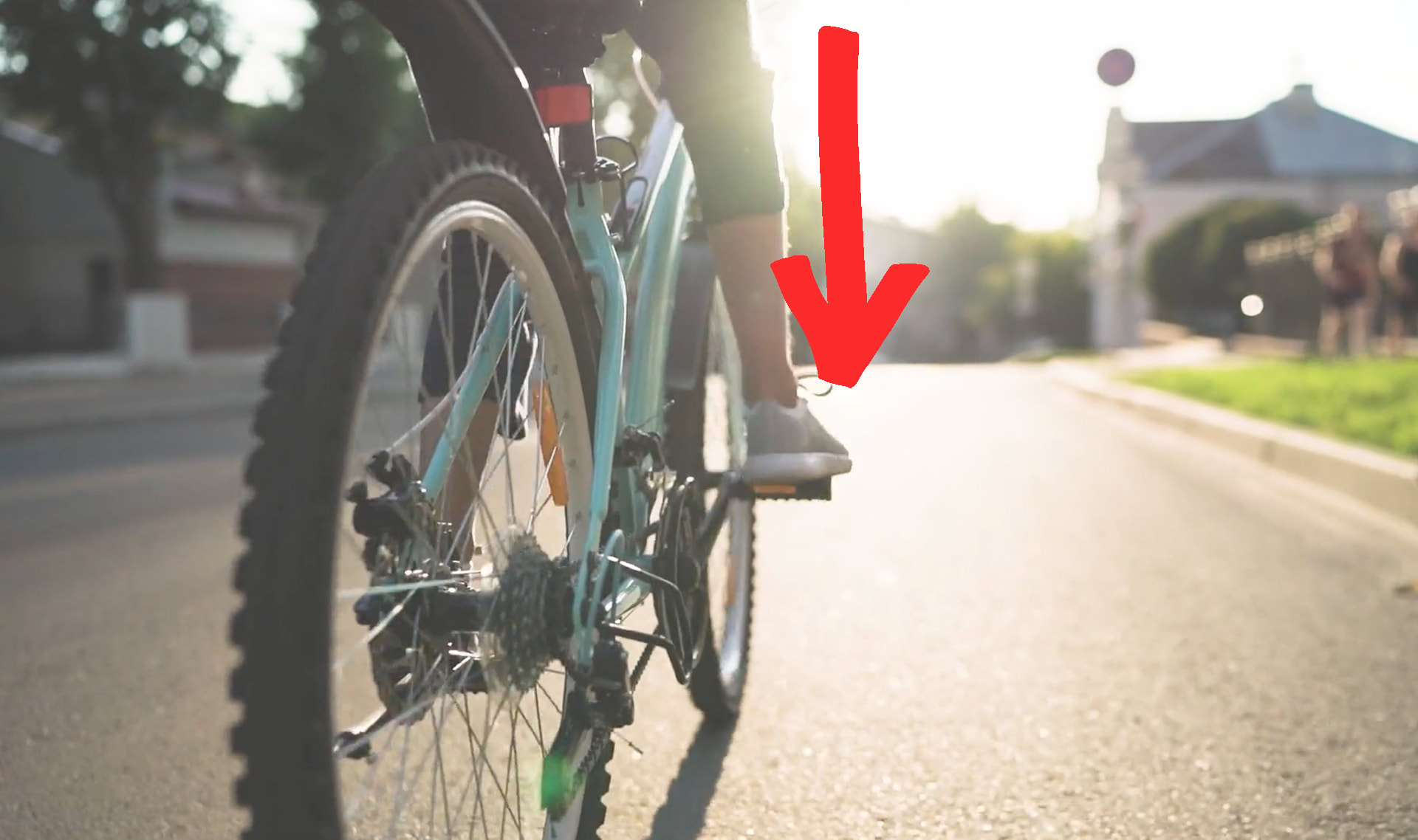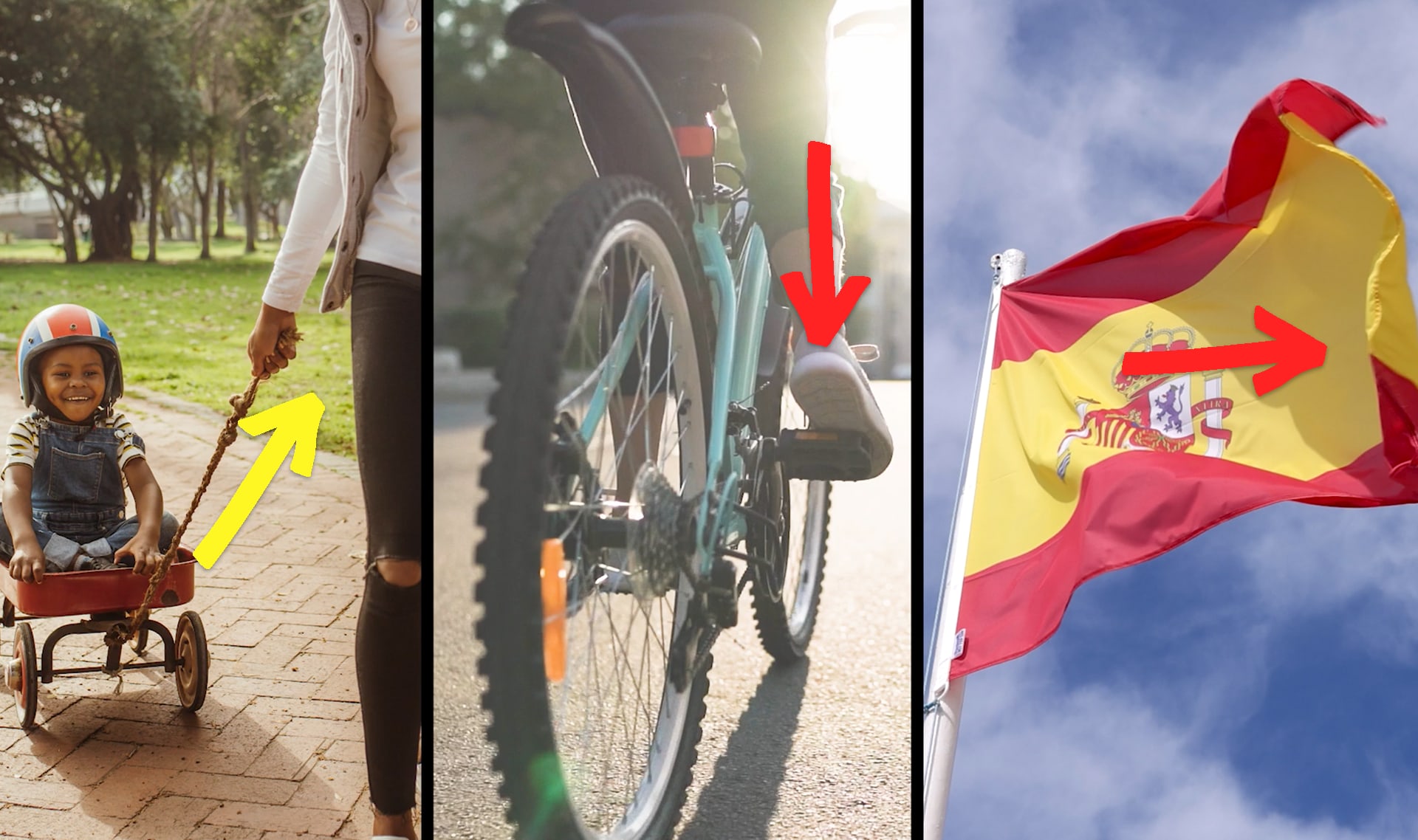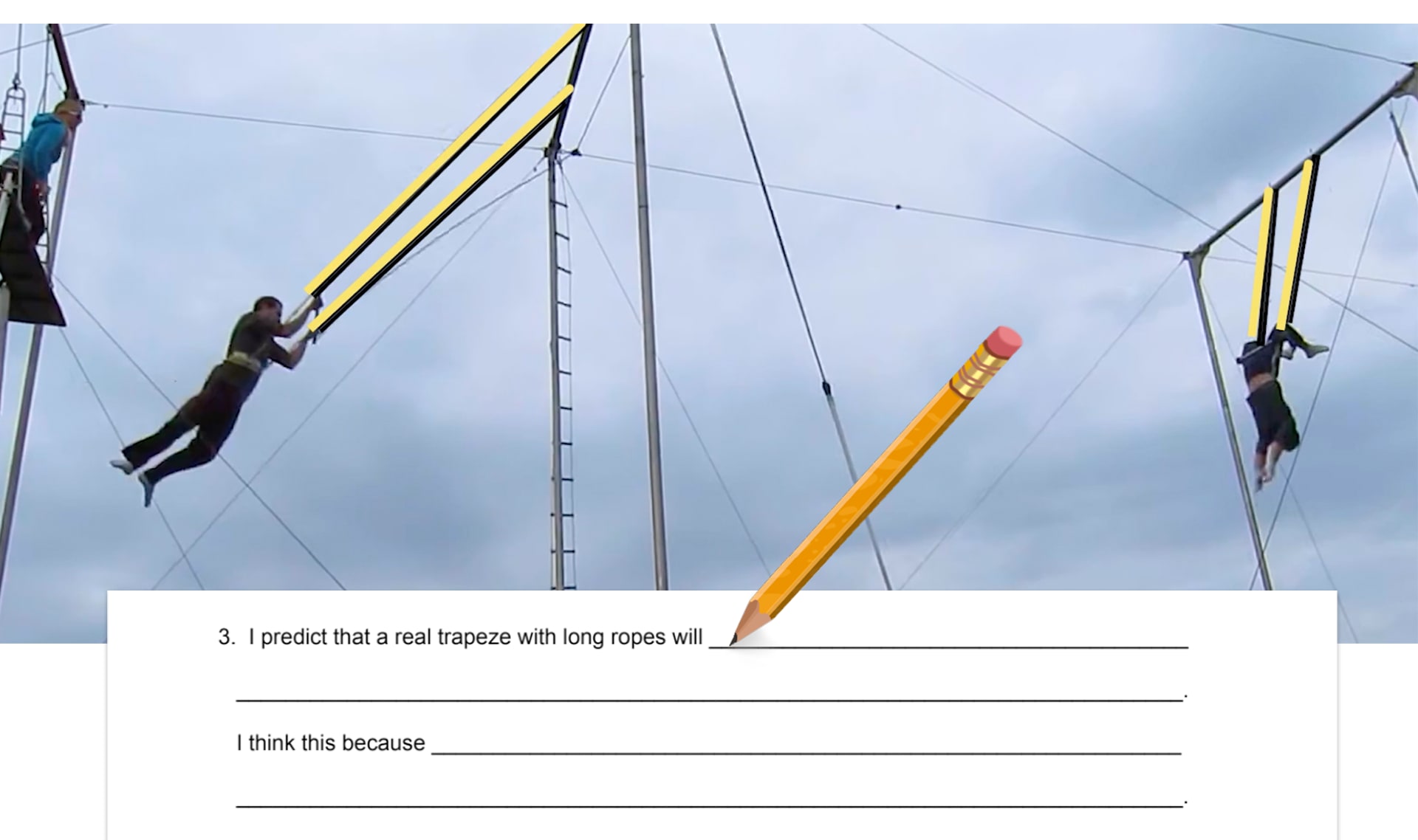


DISCUSS:
How did you know where the swing was going to swing next?

DISCUSS:
How can you figure out how a trapeze artist will swing in different situations, without practicing on a real trapeze?



























DISCUSS:
What force do you think made your tiny trapeze start swinging when you let go?













| Trapeze Training worksheet | 30 copies |
| Trapeze Training Answer Key teacher-only resource | 1 copy |
|
Hardcover Books
Any relatively heavy book will work.
|
Details
30 books
|
|
Rulers
|
15 rulers |
|
File Folder Labels (Stickers)
Masking tape will also work.
|
Details
60 stickers
|
|
Pencils w/ Erasers
|
30 pencils |
|
Small Binder Clips (3/4")
|
60 clips |
|
String
String must be thin.
|
Details
60 feet
|
|
Pennies
Any heavy coins or metal washers will work, but they must all be the same size and weight.
|
Details
75 pennies
|
We suggest students work in pairs.
The trapeze model will need to hang from the side of a desk or table. We suggest that students move their chairs and sit or kneel on the floor to be able to more closely observe the movement of the model.
Cut the string so that each piece is about 2 feet (~61 cm) long. Each pair of students will need two pieces of string.
We suggest building one of the trapeze models prior to student testing to ensure that your materials work together. If the string is too thick, the suggested binder clip size won’t be able to hold these in place. You may need to adjust the type of string you use or you can try using larger binder clips.
Thanks for your feedback! If you have a question or need help, please contact us. Please consider sharing your review:
Sorry the lesson didn’t go well. We read every single review in an effort to improve our Mysteries.
Thanks for letting us know. We’ll wait to ask you for feedback until after you've actually taught it.
Thanks for the feedback! We read every single review in an effort to improve our Mysteries.
Please follow these steps:
Locked
6:10

Why is the sky blue?
Locked
4:41

Why do we call them doughnuts?
Locked
5:16

Could a turtle live outside its shell?
Your membership is expired. The archive of past Mini Lessons is not included in your limited access.
View pricing